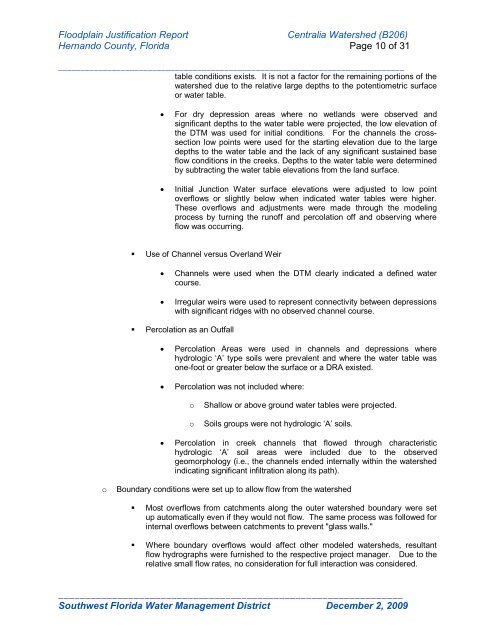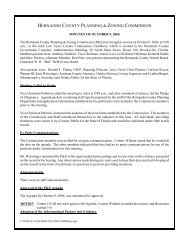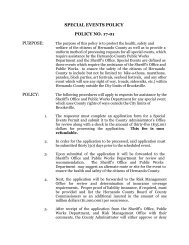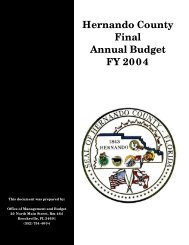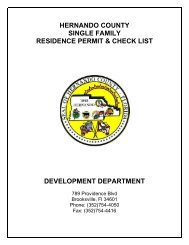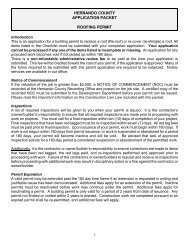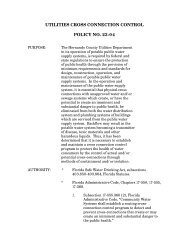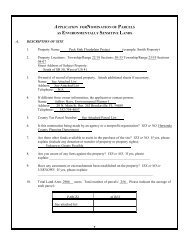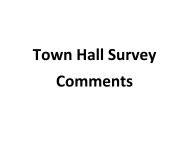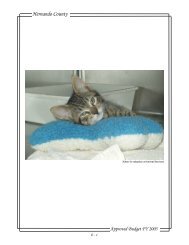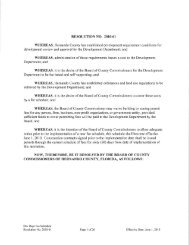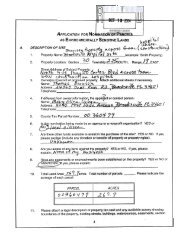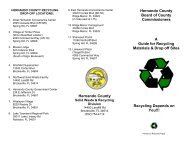Southwest Florida - Hernando County
Southwest Florida - Hernando County
Southwest Florida - Hernando County
- No tags were found...
You also want an ePaper? Increase the reach of your titles
YUMPU automatically turns print PDFs into web optimized ePapers that Google loves.
Floodplain Justification Report<br />
Centralia Watershed (B206)<br />
<strong>Hernando</strong> <strong>County</strong>, <strong>Florida</strong> Page 10 of 31<br />
_____________________________________________________________________________<br />
table conditions exists. It is not a factor for the remaining portions of the<br />
watershed due to the relative large depths to the potentiometric surface<br />
or water table.<br />
<br />
<br />
For dry depression areas where no wetlands were observed and<br />
significant depths to the water table were projected, the low elevation of<br />
the DTM was used for initial conditions. For the channels the crosssection<br />
low points were used for the starting elevation due to the large<br />
depths to the water table and the lack of any significant sustained base<br />
flow conditions in the creeks. Depths to the water table were determined<br />
by subtracting the water table elevations from the land surface.<br />
Initial Junction Water surface elevations were adjusted to low point<br />
overflows or slightly below when indicated water tables were higher.<br />
These overflows and adjustments were made through the modeling<br />
process by turning the runoff and percolation off and observing where<br />
flow was occurring.<br />
• Use of Channel versus Overland Weir<br />
<br />
<br />
Channels were used when the DTM clearly indicated a defined water<br />
course.<br />
Irregular weirs were used to represent connectivity between depressions<br />
with significant ridges with no observed channel course.<br />
• Percolation as an Outfall<br />
<br />
<br />
Percolation Areas were used in channels and depressions where<br />
hydrologic „A‟ type soils were prevalent and where the water table was<br />
one-foot or greater below the surface or a DRA existed.<br />
Percolation was not included where:<br />
o<br />
o<br />
Shallow or above ground water tables were projected.<br />
Soils groups were not hydrologic „A‟ soils.<br />
<br />
Percolation in creek channels that flowed through characteristic<br />
hydrologic „A‟ soil areas were included due to the observed<br />
geomorphology (i.e., the channels ended internally within the watershed<br />
indicating significant infiltration along its path).<br />
o<br />
Boundary conditions were set up to allow flow from the watershed<br />
• Most overflows from catchments along the outer watershed boundary were set<br />
up automatically even if they would not flow. The same process was followed for<br />
internal overflows between catchments to prevent "glass walls."<br />
• Where boundary overflows would affect other modeled watersheds, resultant<br />
flow hydrographs were furnished to the respective project manager. Due to the<br />
relative small flow rates, no consideration for full interaction was considered.<br />
________________________________________________________________<br />
<strong>Southwest</strong> <strong>Florida</strong> Water Management District December 2, 2009


